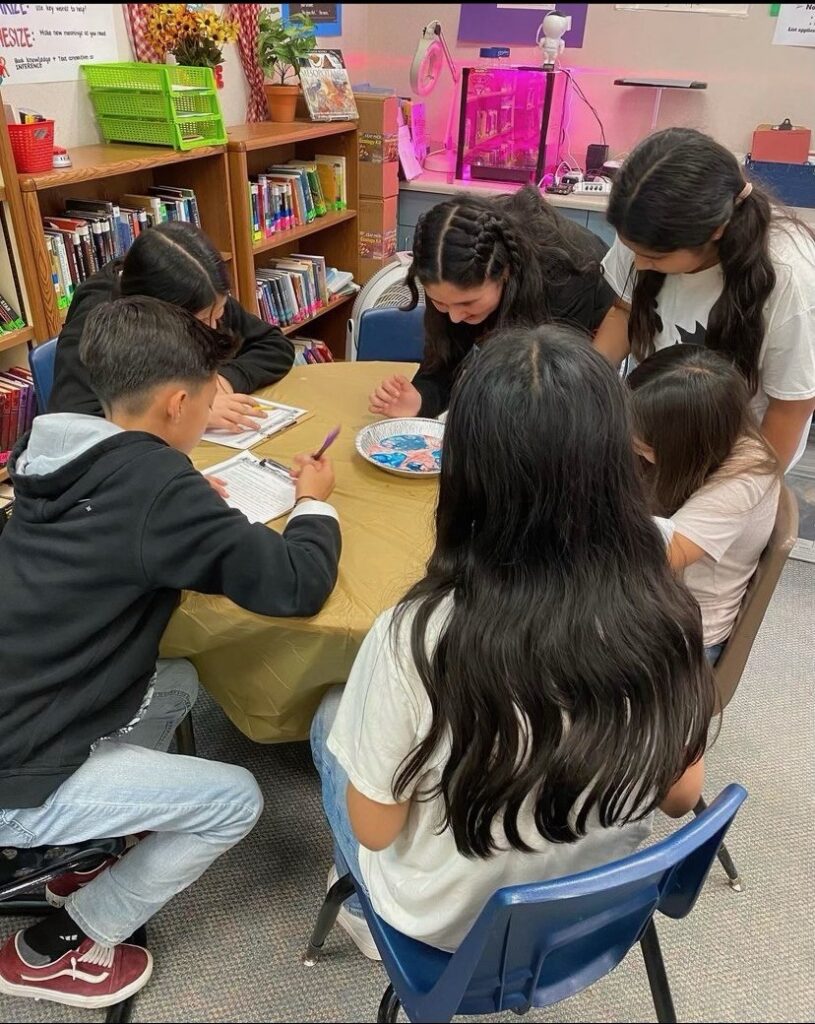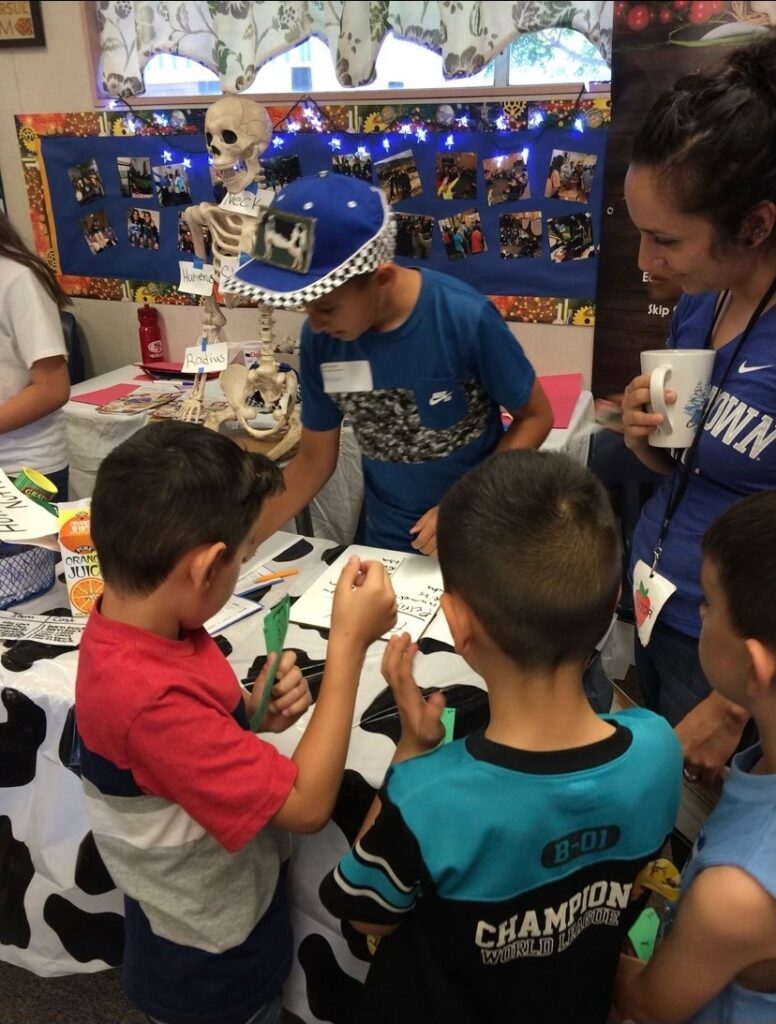Sixth-Grade Teacher Brings Science and Social Studies to Life Through Dairy Connections
For Julie Cates, a sixth-grade teacher who teaches middle school curriculum in the central valley of California, the Discover Dairy and Adopt a Cow Programs have given her a creative outlet to not only meet some of her lesson standards, but help her students connect with the community around them. Through free lessons, videos and activities, her students can “adopt” a calf for the school year, watch it grow, and take their learning a step further through hands-on labs and lessons with the Discover Dairy program. Julie’s school district is located in a rural area where there are a lot of nearby dairy farms along with the production of grapes, tree nuts and citrus.
“I started using the Adopt a Cow program because it’s really important for kids to make that connection [to where their food comes from]. It’s super important to have the virtual components and videos because we can’t always do field trips,” Julie shared. “I also have kids whose parents work in the dairy industry, so it’s important for them and for their self esteem to see how valuable that is. Some of their parents are in labor positions, so it validates them to see how important their role is.”

With four Discover Dairy lessons available at the middle school level, Julie works to connect the lessons to as many subjects and concepts as she can – from social studies and science to math and language arts. For example, in their social studies unit, students learn about ancient cultures with Mesopotamia (the birthplace of agriculture), so Julie is able to connect the dairy lessons to those social studies concepts.
“I do try to keep dairy in our units because there’s a lot of other science I have to cover in social studies. We can get all the standards in with dairy,” she added. “At the beginning when we initially get our adopted cow, I start with lesson one in Discover Dairy. Some of the lessons would be great in a middle school lab, but we’re not in a lab. We’re in an all-inclusive room, so that gets a little tricky. But we learn about the chemical components of milk, that farmers don’t put antibiotics in milk, and how they take care of their cows.”
Throughout the school year, Julie also shares Discover Dairy videos with her students and inserts her own questions related to math and science. She adds a score for comprehension so she can formally assess the students and evaluate their understanding and listening skills. To add a hands-on element to the lessons and curriculum, Julie also led a butter-making activity with her sixth-graders this year.

“We did an activity making butter, because we learn about homogenization and pasteurization [in the lessons]. We can bring in other sciences to supplement everything. This year was very exciting because none of my sixth-graders had ever made butter using cream, so that was a shock for them. For me, that butter-making activity is really fun because it’s so hands-on and it’s simple, too,” Julie explained.
For STEM, engineering, environmental and economic connections, she teaches her students how dairy farmers are using methane digesters and coming up with climate-smart solutions. Then, they actually have the opportunity to design their own digesters.
“In the spring, the kids create digesters and do experiments with them to see that farmers are stewards of the land,” Julie said. “California is a huge state, and we have to understand where our food comes from and how to sustain it and maintain it. I have kids who still think chocolate milk comes from chocolate cows and don’t understand that yogurt is a dairy product. From the truck drivers to the processors and the grocery store, all of those components are important to help students understand the economy, too.”

One of her favorite parts of the program is the Adopt a Cow “live chats” that happen at the end of each school year. Her class can join a live farm tour where they will meet their host farm and adopted calf, and ask questions about day-to-day life on the farm. Julie says this experience brings all the lessons they’ve learned throughout the school year full circle.
“It’s live and it’s natural, and the big cow’s face might be in the camera. It’s so fun for the kids. They just have a ball with it because it feels like they are right there [on the farm].”
Discover Dairy is an engaging, interactive, cross-curricular educational series that meets Common CORE Standards for Math, Science and Reading. This lesson series shows upper elementary and middle school students where milk comes from and how dairy farmers contribute to our world. Discover Dairy is a resource provided at no cost to educators and others who are interested in teaching students about the dairy industry.
Discover Dairy is an educational series managed by the Center for Dairy Excellence Foundation of Pennsylvania in partnership with American Dairy Association Northeast, American Dairy Association Indiana, Midwest Dairy, The Dairy Alliance, Dairy Farmers of Wisconsin, Dairy Council of Arizona and Nevada, Dairy West, New England Dairy, Dairy Farmers of Washington, American Dairy Association Mideast, Dairy Council of Florida, United Dairy Industry of Michigan, Maine Dairy and Nutrition Council, and Oregon Dairy and Nutrition Council.
